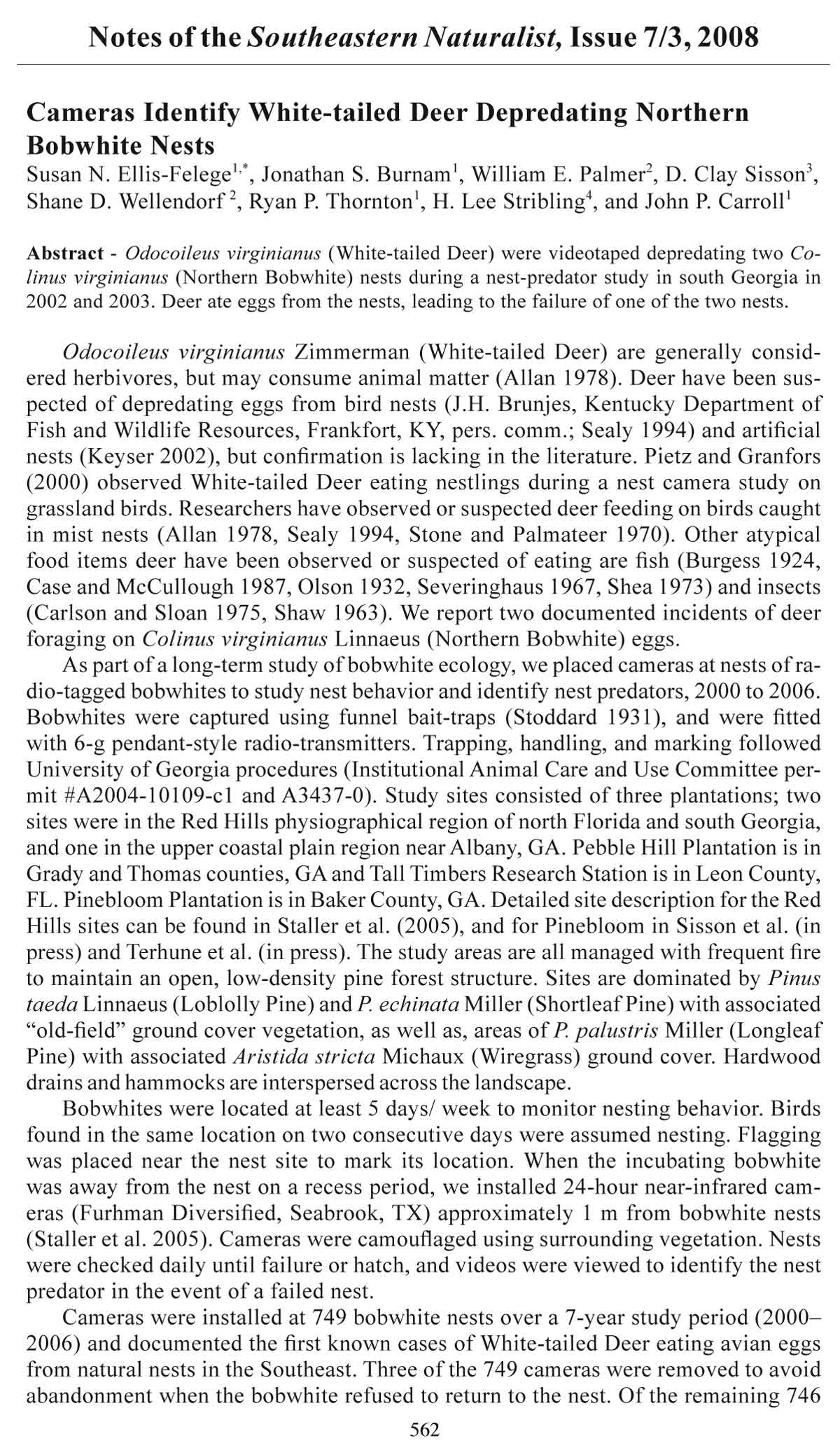Errata: Color Photographs for Morphological and Developmental
Differences in Three Species of the Snapping Shrimp
Genus Alpheus (Crustacea, Decapoda)
Heather R. Spence and Robert E. Knowlton
Southeastern Naturalist, Volume 7, Number 3 (2008): 565–567
Full-text pdf (Accessible only to subscribers.To subscribe click here.)

2008 SOUTHEASTERN NATURALIST 7(3):565–567
Color Photographs for Morphological and Developmental
Differences in Three Species of the Snapping Shrimp
Genus Alpheus (Crustacea, Decapoda)
Heather R. Spence1 and Robert E. Knowlton2,*
Abstract - Living, freshly collected individuals of three species of snapping shrimps
were studied to determine any differing morphological, developmental, and ecological
features: Alpheus heterochaelis, collected from Beaufort, NC; A. angulosus,
found mainly in Jacksonville, FL, but also at one site in Beaufort; and A. estuariensis,
collected at another Jacksonville site. Structural characteristics of these superficially
similar species are summarized, with particular attention to coloration. Adult A.
angulosus individuals have blue-green 2nd antennal fl agella (vs. tan in the other two
species) that are significantly shorter than those of A. heterochaelis. Alpheus angulosus
and A. estuariensis bear smaller eggs (<1 mm, regardless of embryonic stage)
than A. heterochaelis (>1 mm), and the former species displays the zoea larval form
typical of alpheids (vs. abbreviated larval development in A. heterochaelis).
Note: The text for this article appears in the Southeastern Naturalist volume 7,
issue 2, 2008, pp. 207–218, but was erroneously printed with grayscale figures. The
accompanying figures are herein reprinted in full color as originally intended.
1Department of Biology, University of Massachusetts, North Dartmouth, MA
02747-2300. 2Department of Biological Sciences, George Washington University,
Washington, DC 20052. *Corresponding author - knowlton@gwu.edu.
Figure 1. Dorsal view of male A.
heterochaelis, showing “balaeniceps-
type” minor chela.
566 Southeastern Naturalist Vol.7, No.3
Figure 2. a. Tan to pale blue tail fan of A. estuariensis (also characteristic of A. angulosus).
b. Tail fan of A. heterochaelis, with characteristic bright blue spots on uropods.
Figure 3. a. Rostrum of A. angulosus, exhibiting triangular base (indicated by arrow)
and fl anked by eyes. b. Rostrum of A. estuariensis, which lacks triangular base (as
does the rostrum of A. heterochaelis).
Figure 4. a. Anterior region of A. angulosus exhibiting relatively wide minor chela
and paler coloration after being kept in the laboratory. b. Anterior region of female
A. heterochaelis, showing thinner (vs. A. angulosus) minor chela and tan antennal
fl agella. c. Anterior region of A. estuariensis, exhibiting characteristic slender minor
chela, tan antennae, and angular dactylus of major chela.
a b
A. estuariensis
A. heterochaelis
a b
A. angulosus
A.estuariensis
a b c
A. angulosus
A. heterochaelis
A. estuariensis
2008 H.R. Spence and R.E. Knowlton 567
Figure 5. Dorsal view of A. estuariensis abdominal
segments, showing characteristic
banding pattern.
Figure 6. Dorsolateral view of A. angulosus
head, showing blue antennal fl agella (one
indicated by arrow).
Figure 7. Eggs of A. angulosus (top) and
A. heterochaelis (bottom) about halfway
through embryonic development. Egg
size: top, 0.71 x 0.60 mm; bottom, 1.12 x
1.03 mm.
Figure 8. Stage II zoea larva of A. angulosus.
Total length = 2.56 mm.













 The Southeastern Naturalist is a peer-reviewed journal that covers all aspects of natural history within the southeastern United States. We welcome research articles, summary review papers, and observational notes.
The Southeastern Naturalist is a peer-reviewed journal that covers all aspects of natural history within the southeastern United States. We welcome research articles, summary review papers, and observational notes.